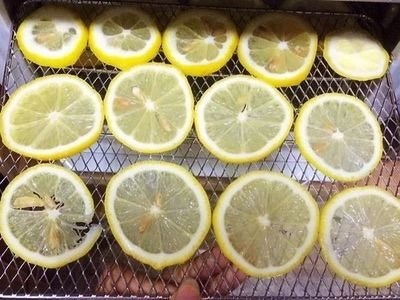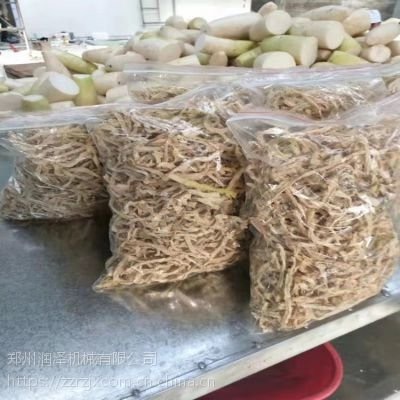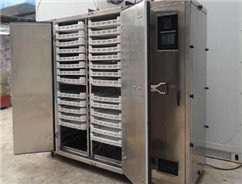
Content Menu
● Introduction
● What is a Food Dehydrator?
● How Does a Food Dehydrator Work?
>> Key Components of a Food Dehydrator
>> Types of Food Dehydrators
● Heat Pump Technology vs Electric Dryers
>> Energy Efficiency
>> Performance
>> Cost Considerations
>> Versatility
● Advantages of Using Heat Pump Dehydrators
● Applications of Food Dehydrators
● Choosing the Right Food Dehydrator
● Maintenance Tips for Food Dehydrators
● Conclusion
● Frequently Asked Questions
>> 1. What is the main difference between heat pump and electric dryers?
>> 2. Can I use a heat pump dryer for all types of food?
>> 3. Are heat pump dehydrators worth the investment?
>> 4. How long does it take to dry food using a heat pump dehydrator?
>> 5. Is it easy to clean a food dehydrator?
Introduction
Food dehydrators have become essential appliances for preserving food, enhancing flavors, and promoting healthy eating. Among various types of dehydrators, heat pump technology is gaining popularity due to its energy efficiency and superior performance compared to traditional electric dryers. This article will explore the intricacies of food dehydrators, focusing on heat pump technology versus electric dryers, their benefits, applications, and considerations for choosing the right machine.

What is a Food Dehydrator?
A food dehydrator is a device that removes moisture from food to inhibit the growth of bacteria, yeast, and mold. This process extends the shelf life of food while preserving its nutritional value. Food dehydrators come in various forms, including traditional electric models and modern heat pump designs.
How Does a Food Dehydrator Work?
Food dehydrators work by circulating hot air around the food, allowing moisture to evaporate. The process typically involves the following steps:
1. Preparation: Fruits, vegetables, or meats are sliced into uniform pieces to ensure even drying.
2. Loading: The prepared food is placed on trays within the dehydrator.
3. Heating: The dehydrator heats the air and circulates it around the food.
4. Drying: Moisture evaporates from the food and is expelled from the machine.
Key Components of a Food Dehydrator
- Heating Element: Provides the necessary heat for drying.
- Fan: Circulates air to ensure even drying.
- Trays: Hold the food during the drying process.
- Thermostat: Regulates temperature for optimal drying conditions.
Types of Food Dehydrators
Food dehydrators can be categorized into several types based on their technology:
- Electric Dehydrators: These are the most common and utilize electric heating elements to dry food. They are available in various sizes and capacities, making them suitable for home use or small-scale commercial operations.
- Heat Pump Dehydrators: These advanced machines use heat pump technology to efficiently remove moisture from food. They are known for their energy efficiency and ability to maintain consistent temperatures throughout the drying process.
- Solar Dehydrators: Utilizing solar energy, these dehydrators are eco-friendly options for those living in sunny climates. They require more time than electric models but can be very cost-effective.

Heat Pump Technology vs Electric Dryers
When comparing heat pump technology with traditional electric dryers in food dehydrators, several factors come into play:
Energy Efficiency
Heat pump dehydrators are known for their energy efficiency. They use a refrigeration cycle to extract moisture from food while consuming less energy than conventional electric dryers. This makes them an environmentally friendly option and reduces operational costs over time.
For example, a heat pump dehydrator can operate at lower temperatures than an electric dryer while still achieving optimal drying results. This lower temperature operation not only saves energy but also helps preserve more nutrients in the food being dried.
Performance
Heat pump dehydrators maintain a consistent temperature and humidity level throughout the drying process. This results in better flavor retention and nutrient preservation compared to electric dryers, which may have fluctuating temperatures.
The ability of heat pump technology to adjust both temperature and humidity levels allows for more precise control over the drying environment. This precision is particularly beneficial when dealing with delicate foods such as herbs or fruits that can easily lose flavor or nutrients if dried too quickly or at too high a temperature.
Cost Considerations
While heat pump dehydrators may have a higher initial purchase price, their long-term savings on energy bills often outweigh this cost. Electric dryers tend to be less expensive upfront but can lead to higher electricity costs over time.
Additionally, heat pump dehydrators often come with features that enhance their usability and efficiency, such as programmable settings and built-in timers that allow users to set specific drying times for different foods.
Versatility
Heat pump technology allows for a wider range of drying temperatures, making these machines suitable for various foods, including delicate fruits and meats. Electric dryers may struggle with more sensitive items due to their fixed temperature settings.
For instance, when drying fruits like apples or peaches, a heat pump dehydrator can operate at lower temperatures that prevent browning while still effectively removing moisture. In contrast, an electric dryer might require higher temperatures that could alter the fruit's color and flavor profile.
Advantages of Using Heat Pump Dehydrators
1. Energy Savings: Reduced energy consumption leads to lower utility bills.
2. Improved Quality: Better flavor and nutrient retention in dried foods.
3. Reduced Carbon Footprint: More sustainable option for environmentally conscious consumers.
4. Versatility: Capable of handling a variety of foods with different moisture content.
5. Consistent Results: Reliable drying performance with minimal monitoring required.
6. Lower Operating Temperatures: Helps preserve delicate flavors and nutrients that might be lost in traditional methods.
7. Reduced Noise Levels: Many heat pump models operate more quietly than conventional electric dryers due to advanced fan designs.
8. Greater Control Over Drying Process: Users can customize settings based on specific foods or desired outcomes.
Applications of Food Dehydrators
Food dehydrators are used in various settings, including:
- Home Use: Individuals looking to preserve fruits, vegetables, and herbs for personal consumption benefit from having a reliable dehydrator at home.
- Commercial Use: Businesses producing dried snacks or ingredients for culinary applications rely on efficient dehydration processes to meet consumer demand.
- Emergency Preparedness: Creating long-lasting food supplies for emergencies or natural disasters has become increasingly important; dehydrated foods can be stored for extended periods without refrigeration.
- Health-Conscious Consumers: Many people are turning to homemade dried snacks as healthier alternatives to store-bought options that may contain preservatives or added sugars.
Choosing the Right Food Dehydrator
When selecting a food dehydrator, consider the following factors:
- Type of Technology: Decide between heat pump technology or traditional electric models based on your needs.
- Capacity: Choose a size that fits your production requirements; larger families or businesses may require models with greater capacity.
- Temperature Control: Look for adjustable settings for different types of foods; some models offer presets for specific items like jerky or fruit leathers.
- Ease of Cleaning: Consider models with removable trays for easy cleaning; some units even come with dishwasher-safe parts.
- Brand Reputation: Research brands known for reliability and customer service; user reviews can provide insight into performance and durability.
Maintenance Tips for Food Dehydrators
To ensure longevity and optimal performance from your food dehydrator:
1. Regular Cleaning: Clean trays after each use to prevent cross-contamination between different foods.
2. Check Seals and Gaskets: Ensure that seals are intact to maintain efficiency; replace any worn parts as needed.
3. Store Properly: Keep your dehydrator in a cool, dry place when not in use; avoid exposure to moisture which could lead to mold growth.
4. Follow Manufacturer Guidelines: Adhere to recommended maintenance schedules provided by manufacturers for best results.
5. Monitor Performance: Keep an eye on drying times; if they start increasing significantly beyond normal ranges, it may indicate that maintenance is needed.
Conclusion
Food dehydrators are invaluable tools for preserving food while maintaining its quality and nutritional value. Heat pump technology offers significant advantages over traditional electric dryers in terms of energy efficiency, performance, versatility, and overall quality of dried products. By understanding these differences, consumers can make informed decisions when selecting a food dehydrator that best suits their needs.
Investing in a high-quality food dehydrator not only enhances your culinary capabilities but also contributes positively to sustainable living practices by reducing waste through effective food preservation techniques.

Frequently Asked Questions
1. What is the main difference between heat pump and electric dryers?
Heat pump dryers are more energy-efficient and maintain consistent temperatures compared to electric dryers, which can have fluctuating temperatures and higher energy costs.
2. Can I use a heat pump dryer for all types of food?
Yes, heat pump dryers are versatile and can handle a wide range of foods, including fruits, vegetables, meats, and herbs.
3. Are heat pump dehydrators worth the investment?
While they may have a higher initial cost, heat pump dehydrators save money on energy bills over time and provide better quality dried foods.
4. How long does it take to dry food using a heat pump dehydrator?
Drying times vary depending on the type of food and thickness of slices but generally range from several hours to over 12 hours.
5. Is it easy to clean a food dehydrator?
Most modern food dehydrators come with removable trays that make cleaning easy; however, it's essential to follow manufacturer instructions for maintenance.
By considering these aspects when choosing between heat pump vs electric dryer technologies in food dehydration, users can optimize their drying processes while ensuring high-quality results that meet both personal preferences and commercial standards.












